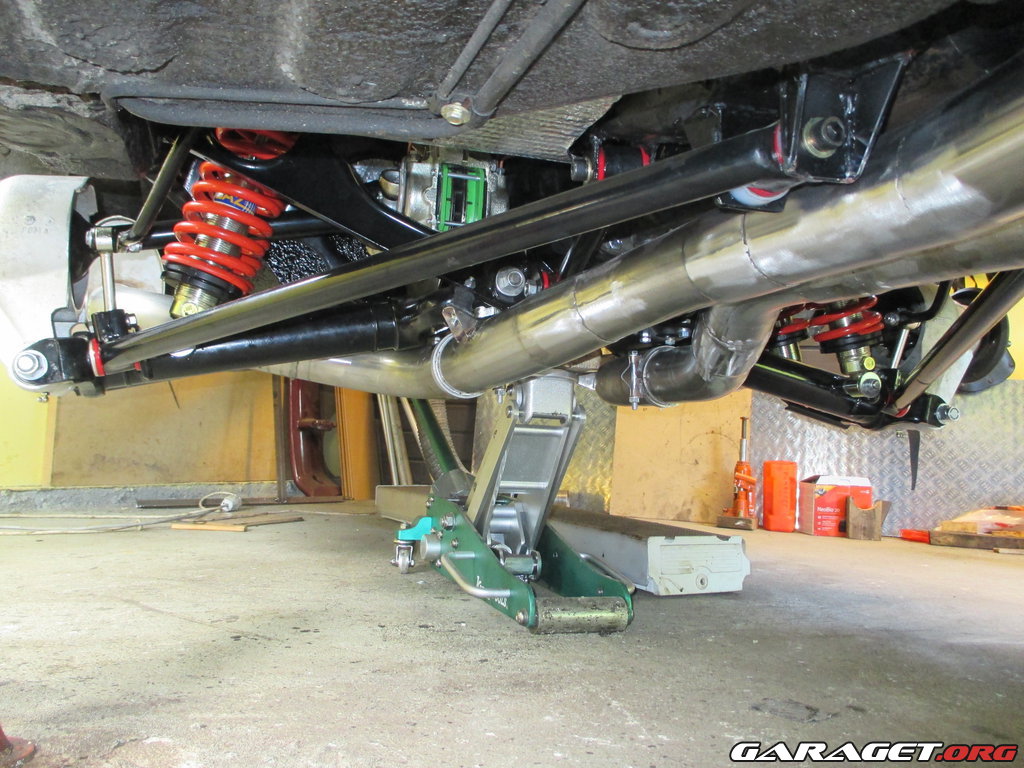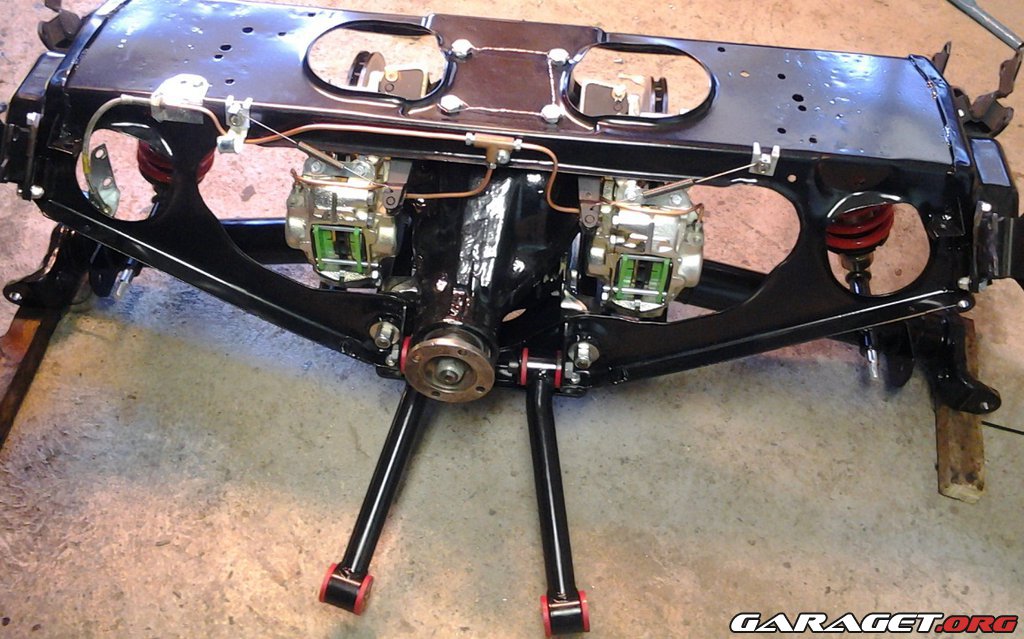I posted on this in the racing forum, but thought I’d give this a
try on the XJS forum:
I have been studying the cage motion/rear wheel steering problem
for a bit, and I can come up with
the following approaches:
Using a modified trailing arm idea (these all replace the OEM
trailing arms with arms that tie to a point close to the center of
the car, along the same axis as, and in the same plane as the inner
pivot of the swing arm):
Andrew Robertson’s XJ/454 (JagLover’s photo album)
Rob Beere Racing’s A-frame, with adjustable camber and toe-in.
Terry’s Jag (for E-types only?) that ties the tieplate to what
appears to be the trailing arm mount points, and ostensibly also
has the A-frame trailing arm mod.
JCNA’s tech index feature, which shows the tieplate bolted to the
frame (? or are the bolts shown the place where the revised
trailing arms attach?) via a large T shaped plate, which is also
bolted at the trailing arm points, and which has revised trailing
arms. This looks to be E-type only, too (although the concept
ought to be applicable to XJS’s).
There’s the approach of FiBoy’s, which is to use an XJ40 part to
rigidly tie to the center of the cage, and mounts to the front
trailing arm mounts. Handles cage tilting motions, resists yaw
(rear wheel steering), but does not provide wheel thrust reaction
at the old trailing arm attachment point.
There’s the Harvey-Bailey approach which augments the trailing arm
setup by adding a chassis stiffening X-brace under the cage, and
some straps (?) to tie the cage to resist tilt motions under
accel/deccel. Does not address rear steering. Targeted at
convertibles, for which additional chassis stiffining is important
(early convertibles).
Finally, I have noted that there are vendors who offer (like Beere,
for example), uprated bushings for the trailing arms. What’s the
point of this? If the trailing arms are the cause of rear-wheel
steering (because they pull the wheel forward as the suspension
compresses or extends beyond the at-rest position), wouldn’t you
want MORE compliance at these points, and not LESS, so that the
tendency toward pulling the wheel would be lessened? Making the
compliance LESS (e.g.,stiffer) would seem to encourage MORE rear
wheel steering effect, and not LESS. On the other hand, more
stiffness at these points means that the at-rest and near at-rest
yawing tendency of the cage, especially under uneven traction
conditions (one wheel is getting traction, the other is getting
much less) is lessened.
For a street car, it seems to me that solutions that address cage
tilt under accel/deccel are more important than solutions that
address rear wheel steering. The XJ40-based solution that FiBoy
uses would seem to do both, although it would seem that the wheel
thrust loads, especially if one has uneven traction would put a lot
of stress on the center of the cage.
Any thoughts?
Thanks!
Mike–
Mike, 1990 5.3 XJS Convertible, ‘Caterwaul’
Lakewood, OH, United States
–Posted using Jag-lovers JagFORUM [forums.jag-lovers.org]–
// please trim quoted text to context only

